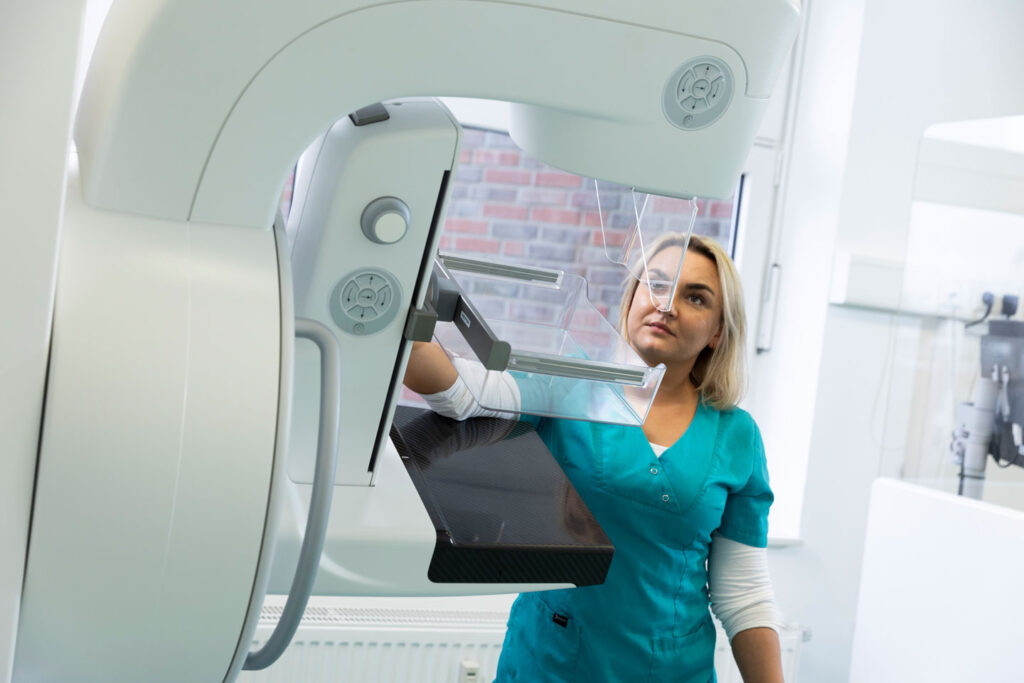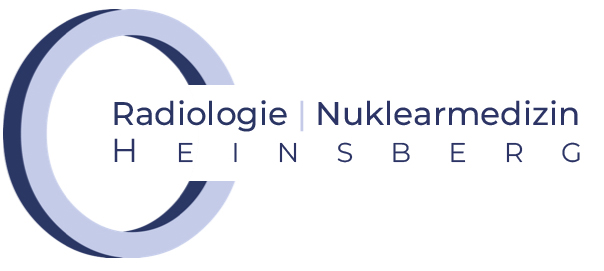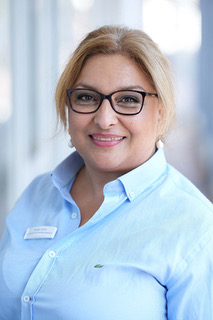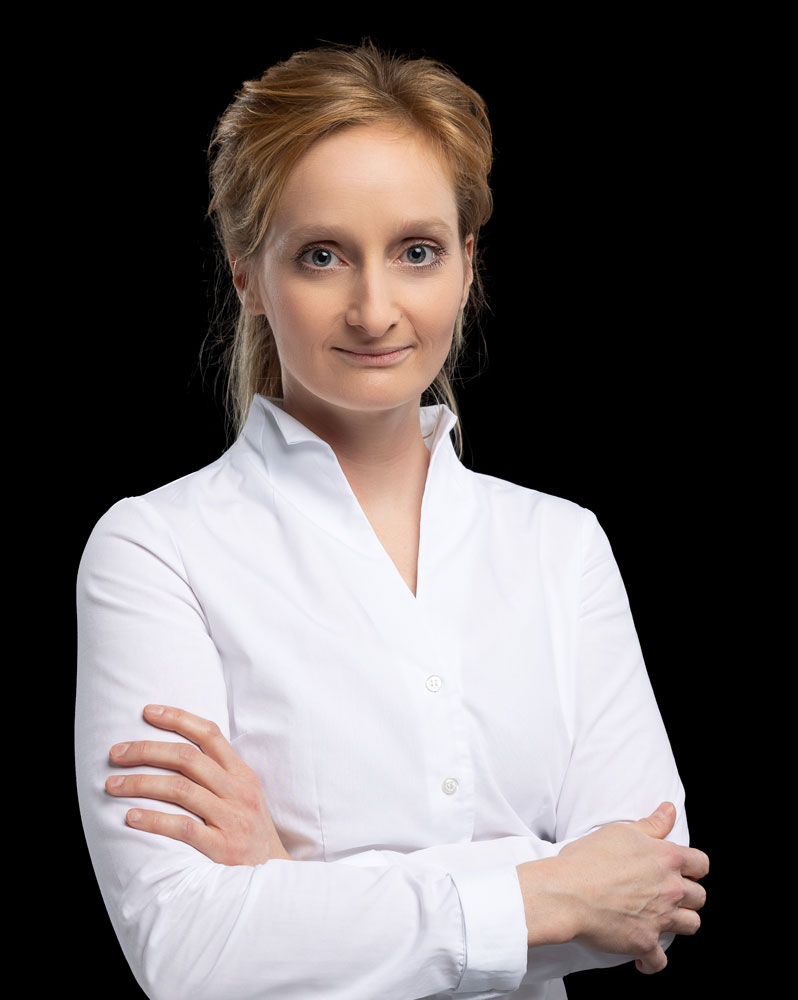Mammography
We offer digital mammography in our radiology department. This special X-ray examination of the breast is designed to detect changes at an early stage.
Mammography includes two images of each breast as standard and is considered the gold standard for detecting breast cancer worldwide, even at a stage when the cancer is not yet present as a palpable lump.
During the examination, the breast is carefully but firmly positioned in a holding device and briefly compressed. This compression serves to minimise radiation exposure and maximise image quality.
Although this procedure can be uncomfortable, it is usually painless.
Mammography:
ALL INFORMATION AT A GLANCE
Technology
Safety
Areas of application
Image quality
Patient comfort
Aftercare
Note
Mammography procedure
Before examination
- Please bring any previous images and/or previous findings with you.
- Please do not apply any creams or ointments to your upper body or breasts. Do not use deodorants containing aluminium.
- For male patients: If you have a lot of hair on your upper body and chest, please remove all hair/shave your chest before the examination.
- For premenopausal female patients: Ideally, your appointment with us should take place shortly after your period, as the breasts are less sensitive at this time.
During the examination
In the changing room, you will be asked to expose your upper body. In the examination room, your breast will be positioned between the mammography device in a standardised way. The breast is carefully compressed briefly to obtain clear images and minimise radiation exposure. Two images are taken per breast to ensure complete visualisation of the breast tissue.
After the examination
The examination usually takes no longer than 10 minutes. After the images have been taken, you can get dressed and take a seat in the waiting room. The images will be checked and given to you if necessary. The findings will be sent to the referring doctor promptly, usually on the same or next day.



